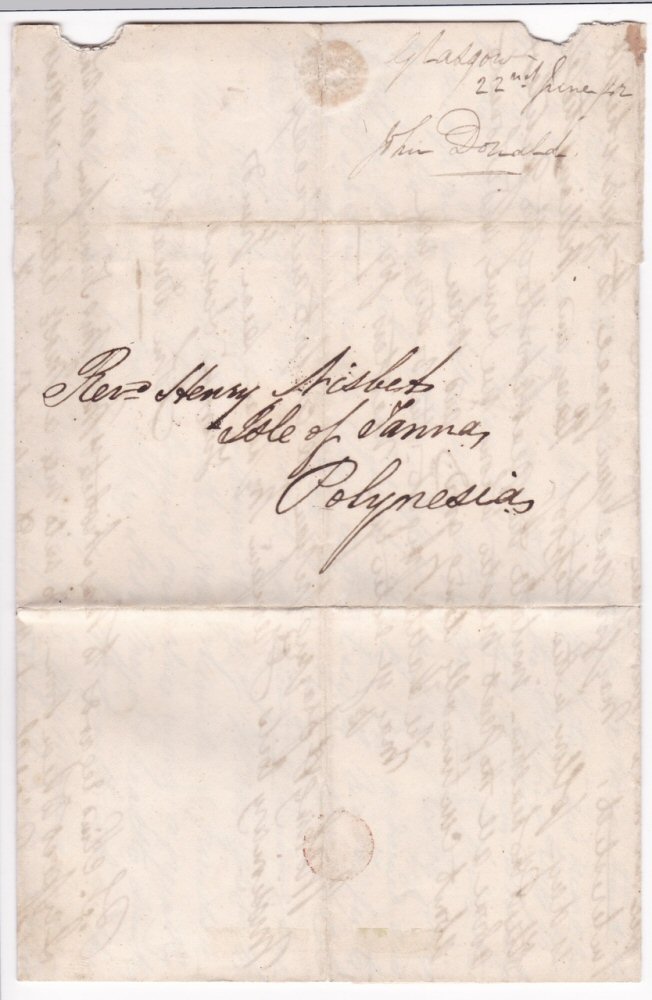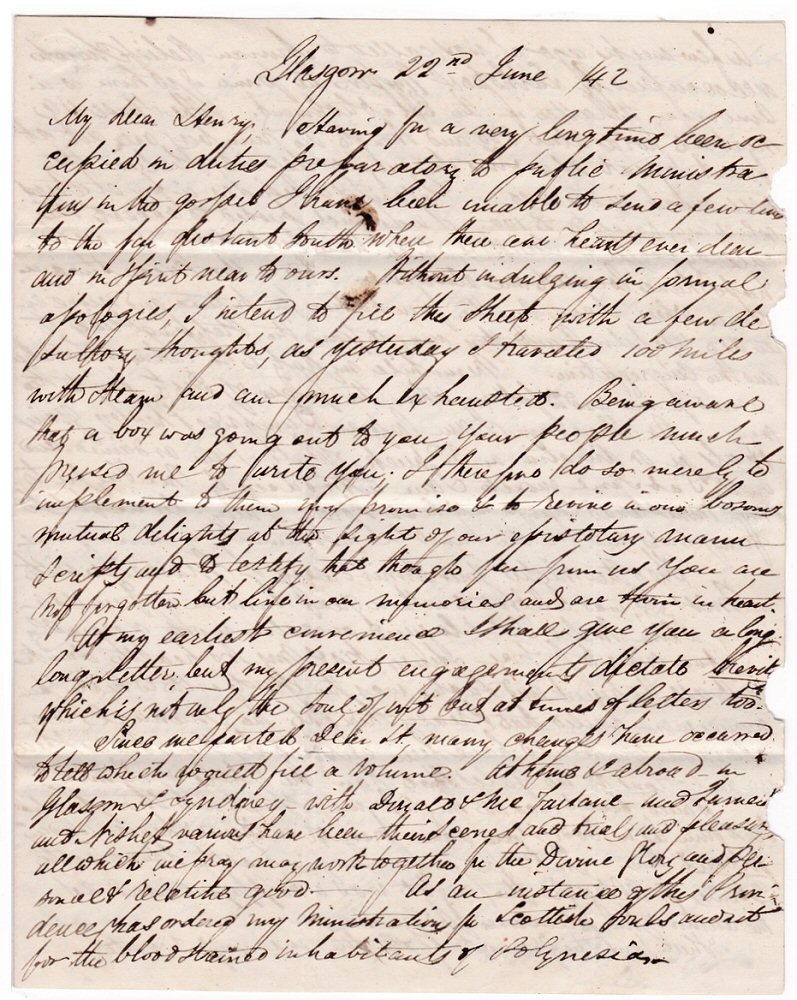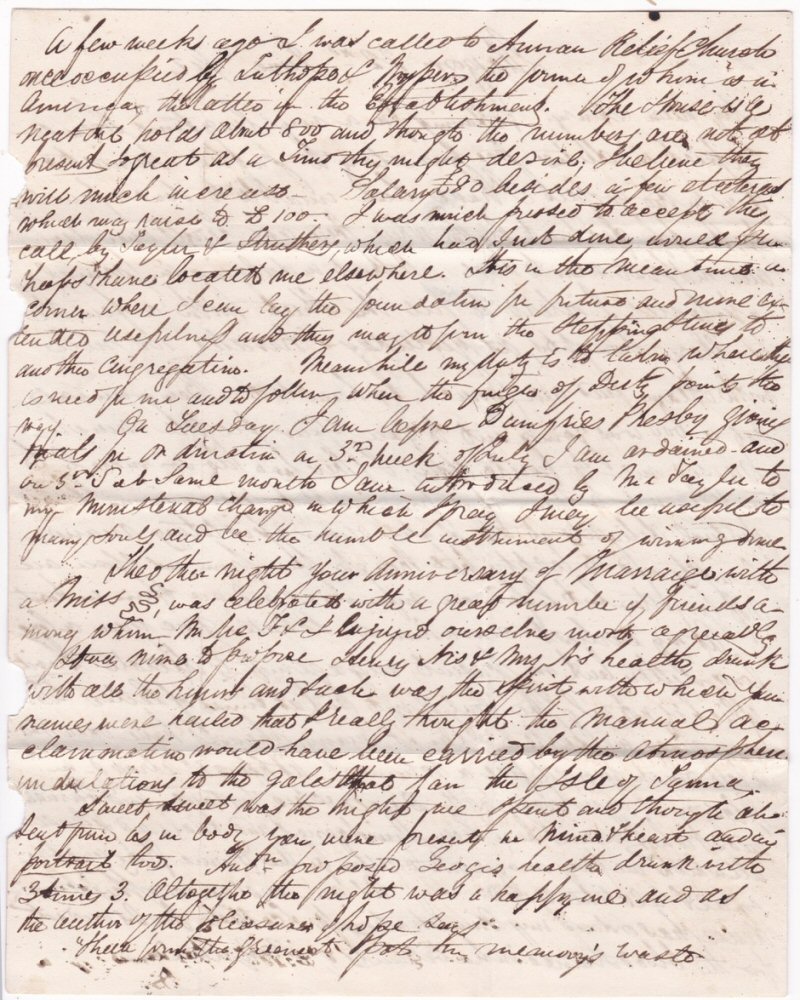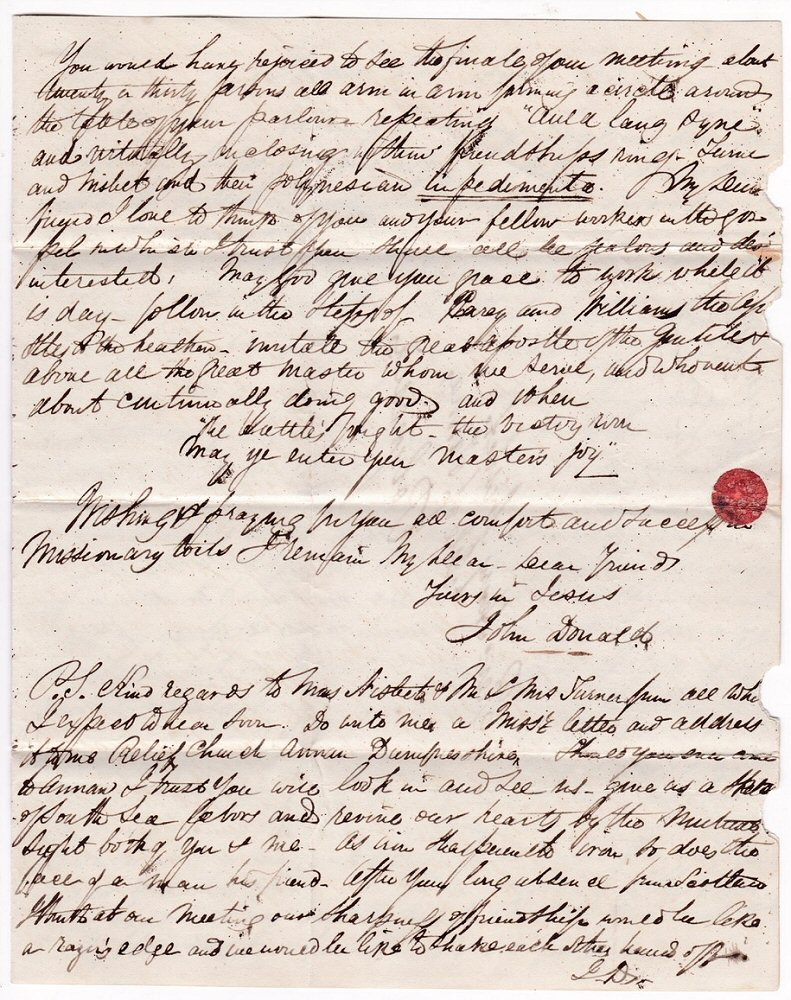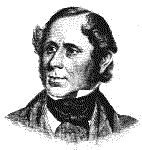
The Pre-Post Office Era: The New Hebrides Nisbet Letters: |
Letter from Glasgow to Reverend Nisbet on Tanna. Tombstone cancel London Ship Letter 20 April 1842, Sydney Ship Letter 29 July 1842. |
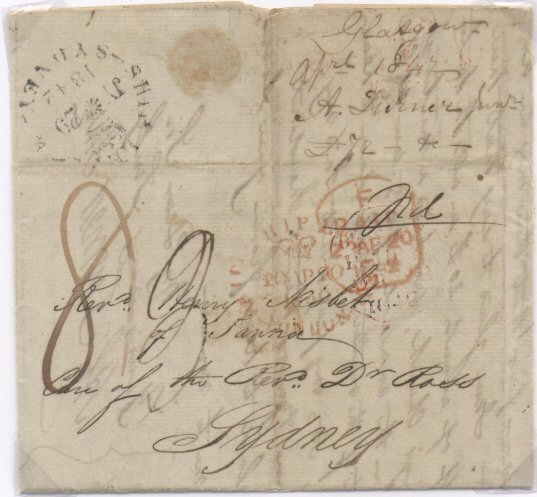 |
1842 | |
26 May 1842: four-page letter from Andrew Macfarlane in Glasgow addressed to Nisbet on the island of Tanna. |
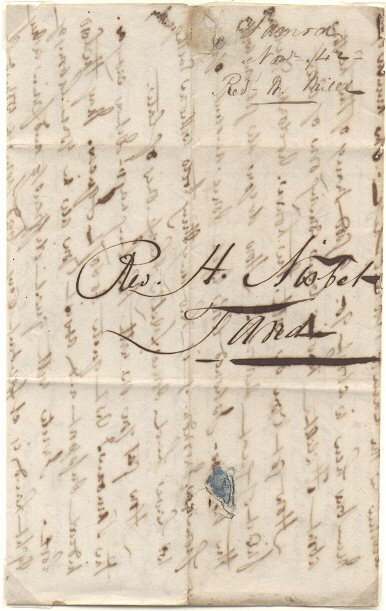 |
1842 |
1842: One page letter from Lydia Crook in Sydney to Nisbet in Tanna, dated September 1842. |
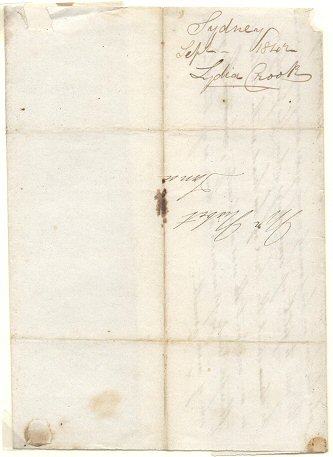 |
1842 | |

Letter sent from Glasgow on June 22th 1842 by Mr John Donald to Rev. Henry Nisbet, Isle of Tanna, Polynesia.
(coll. Fred Petit)
Please see here the description of this letter as it was auctioned by Corinphila, Switzerland:
"1842 (June 22): Entire letter from John Donald in Glasgow to the Island of Tanna, Reverend Henry Nisbet correspondence,
without postal markings - the contents state "being aware that a box is going out to you", with good will messages to
both Mr. and Mrs. Nisbet and fellow missionaries the Turners. Both couples were landed on Tanna from the London Missionary
Society ship "Camden" at the end of June 1842 and after a difficult period were evacuated by the whaler "Highlander" in
January 1843 and taken to Samoa due to hostile threats from the natives of Vanuatu. An early Nisbet letter sent via
the L.M.S. ship to Sydney and routed on by Reverend Ross of the L.M.S. - it is probable that it reached him prior to
their leaving for Samoa. Displays well, very rare."

25 November 1842: Three page letter from Reverend Mills at Apia to Nisbet in Tanna. The latter may have reached
him in Tanna before he had to leave the island. |
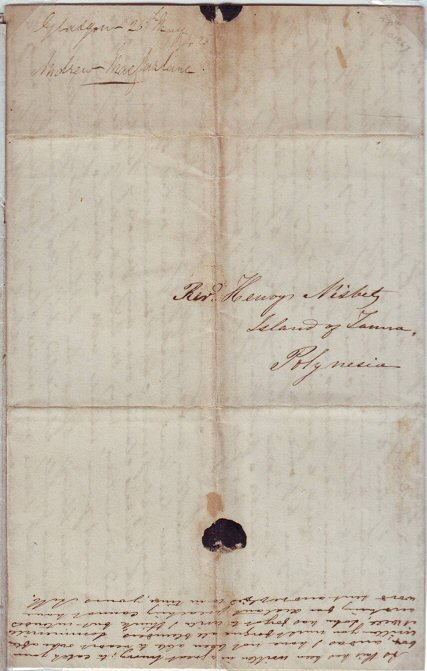 |
1842 | |
By the early 1850's, London Missionary Society stations existed throughout the southern islands of the group. No official system of mail existed, but the mission brig Camden under Captain Morgan (until 29 September 1842, when she departed Sydney for Samoa and from there to London) and, October 1844, the barque John Williams, also under Morgan, attended to the pickup and delivery of mail. Of course every whaler or trading ship transported mail too. Post destined for the civilised world was taken to Sydney, where it was placed in the ordinary mail. Letters bound for other stations in the South Pacific were carried to their destinations. Quantities were small and there was no need for any system of franking. Until the discovery of the Nisbet correspondence in the 1970's, it was believed that no missionary correspondence had survived in private hands. |
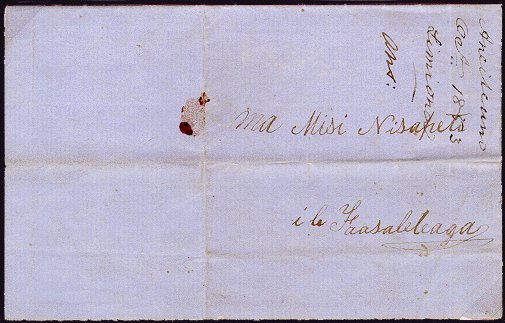 |
31 October 1853 |
Stampless entire from Aneityum to Faasalaleaga, Samoa, endorsed
on receipt by Rev. Henry Nisbet "Aneiteum, Oct. 1853, Simiona". Seven letters
written to, or by, Reverend Nisbet comprise the earliest known surviving
mail from the New Hebrides. This letter (the third earliest) was written
to him at the London Missionary Society mission at Laloma-
lava, Faasalaleaga,
Samoa on 31 October 1853 by Simiona, on Aneityum. The two Samoan teachers Simiona and
Apolo had been stationed at Aname on the north coast of Aneityum together with another
Samoan couple (Tavita and his wife, who both died in 1845) since 30 March 1841. On 13 July 1848 the John Williams returned to the New Hebrides because Nisbet wished to establish a station on Efate. On arriving there, however, they found conditions at Erakor still too precarious and so headed south for Aneityum. Revds. Turner, Powell, Archibald were also on board, together with Rev. Geddie and his family, who it had been intended to leave on Efate. On reaching Aneityum, the conditions at Anelgauhat seemed favourable and, in a discussion on board, Simiona and Pita made the courageous offer to stay on the island with Rev Geddie. This became the establishment of the first permanent LMS mission station in the New Hebrides. Simiona became one of the longest serving Samoan teachers, surviving on Aneityum until he died there during the terrible measles epidemic in 1865. The letter, written in Samoan, bears no postal markings and was carried by the mission barque John Williams ( from April 1845 to 1855: Captain Robert Clark Morgan), which had left Sydney on 13 October 1853, bound for "Anatam and Tahiti", according to the Sydney Morning Herald. It called at Anelgauhat on Aneiteum on 22 October 1853, made a journey through the islands up to Havannah Harbour, then swung south-west to the islands of Mare and Lifou in the Loyalty islands, before returning to Anelgauhat, where this letter and others were picked up. It departed on 15 November 1853, visiting Niue before reaching Samoa on 4 January 1854. Captain Morgan's original log for the voyage is now held in the Mitchell Library in Sydney. Among many other fascinating details it records that the ship's cook died on the leg to Niue and, in spite of it being an LMS ship, full of missionaries who held services twice a day, Christmas Day 1853 passed without any mention in the log whatsoever. |
This man, Captain Robert Clark Morgan, most likely accepted this letter personally and delivered it to Henry Nisbet. Picture thanks to Graham Whyte, Great Great Great Grandson of Captain Robert Clark Morgan. |
|
Click on this map to see a map of the New Hebrides
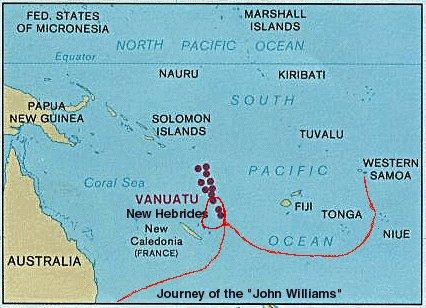
Thanks for the map to the
Perry-CastaŮeda Map Collection at the University of Texas at Austin
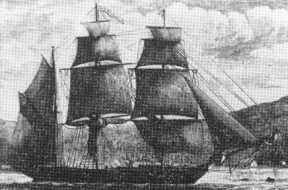
John Williams I - Picture thanks to
J. Graham Miller: "Live", Sydney (1976?)
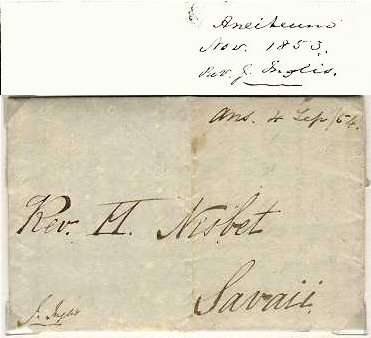 |
November 1853
Letter from Aneityum to Savaii, Samoa. As there are no postal markings on these
letters, the date can be determined by the content of the letter only.
This one most likely has been carried together with the one above by the
John Williams too. |
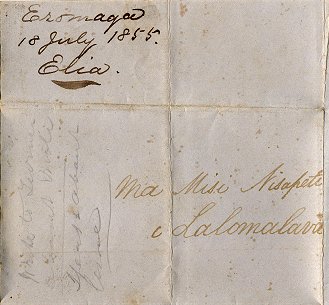 |
18 July 1855
Letter from Erromanga to Lalomalava, Savaii, Samoa. It is written in a native language
but in Roman script., datelined "Bokala 18 Julii 1855" and addressed to "Ma Misi
Nisapeti i Lalomalava", with Nisbet's filing endorsement "Eromaga 18 July 1855, Elia". |
28 July 1855: Three page letter written in native language by Mailei in Eromango, addressed to Nisapeti at Malua, Samoa. |
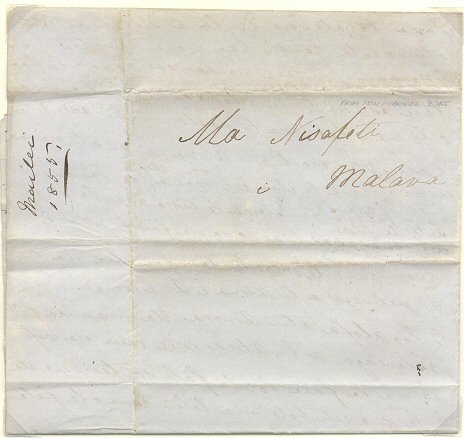 |
1855 | |
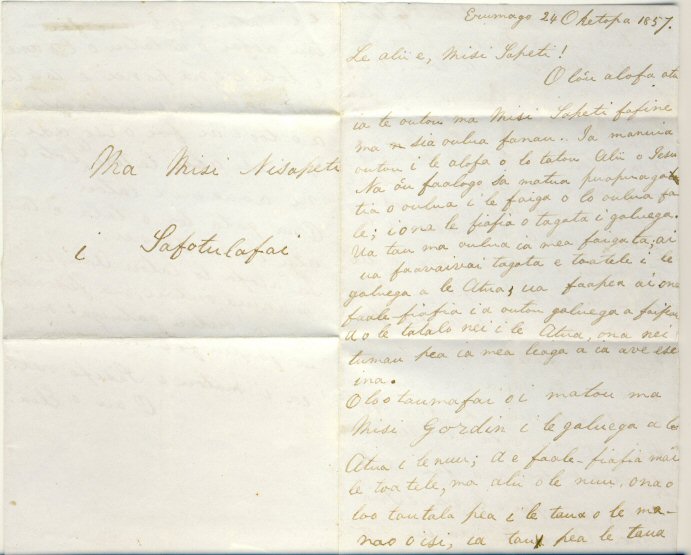 |
24 October 1857
Letter from Erromango to Safotulafai, a village on Savai'i, Samoa, headed "Erumago
24 Oketopa 1857" and addressed to the Rev. Nisbet in Samoa as "Ma Missi Nisabeti, i Safotulafai".
The sender is a Samoan teacher at Dillon's Bay, Erromango, named Elia. He was
one of four Samoans who came to Erromango in 1854 (see letter above). In summer 1857 he was found in Negone on the island of
Mare in New Caledonia together with Meariki. They had left Erromango in bad health but were well again and wanted to go back there. There were brought
to that island by Rev. Geddie in the mission ship John Knox. Paulo and his wife, Elia's wife and 12 children of the
teachers died at Erromango before they fled to Mare.
Teacher Vao died on the Isle of Pines on the way to Negone. Poito and Meariki's wife died at Negone.
Translation thanks to Pastor Keneti Leota of Mount Warren Park Community Church, 4 Mountain View Crs,
Mt Warren Park 4207, Queensland, Australia (Klinger coll., ex Goron coll., ex "Santo" coll.) |
The Pre-Post Office Era: The Nisbet Letters from the New Hebrides: |
These letters from Rev. Nisbet are the oldes ones known from the New Hebrides. The text is the original description from the 18 June 1985 Christie's Robson Lowe catalogue:
|
|
1842 (27th July) E. L. headed "Port Resolution Tanna" from Rev. Nisbet to his sister in Glasgow, rated "3" and "8", showing on face "PAID SHIP LETTER/ CROWNS/SYDNEY" oval d.s. and on reverse London and Glasgow d.s. The long and interesting contents, basically a resumť of "how we have got thus far", include a reference to "3 vessels in the harbour wh have been at various islands in search of sandalwood", his comments on the building of his house, the native being friendly, native chiefs being given presents."The volcano sometimes makes a great noise and sends out clouds of sparks" and the setting up of classes for boys and girls. A fascinating insight into early missionary life in the South Seas. The earliest recorded cover from the New Hebrides. |
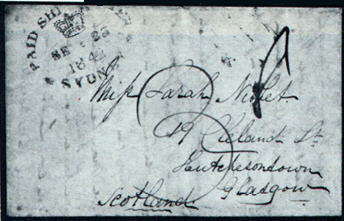
|
|
1848 (1st Aug) E.L. headed "Island of Aneiteium On Board the 'J.W.' " (John Williams) from the same correspon- dence as last, rated "3" and "1/-", showing on reverse "GENERAL POST OFFICE/ CROWN/SYDNEY" c.d.s., London and Glasgow d.s. The long and closely written letter refers to his voyages to Samoa and New Caledonia and a protracted essay on the teachers and teaching of the natives. The second earliest recorded cover from the New Hebrides. |
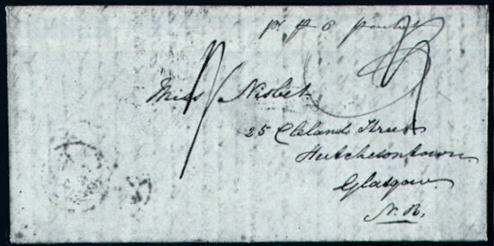 |

